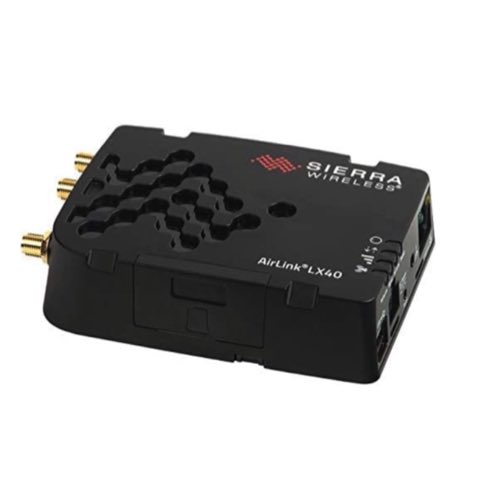LX40 Routers

Semtech LX40 Routers are an essential tool in wireless communications, offering high-speed data transmission capabilities within a compact and rugged form. This piece of technology, part of Semtech's renowned AirLink series, demonstrates the company's dedication to advancing IoT solutions. Despite its small size, the LX40 does not compromise on functionality or power, showcasing a brilliant combination of compact design and high-performance features.
A distinguishing feature of the LX40 is its ability to provide instant, "out-of-the-box" connectivity. This plug-and-play experience simplifies the process of setting up high-speed internet connections, proving especially beneficial for small businesses, retail outlets, and commercial setups. The LX40 is designed to handle a multitude of applications, capable of supporting devices like IP cameras, security systems, point-of-sale devices, and even industrial machinery.
More Information about Semtech LX40 Routers
Moreover, the LX40 shines in its provision of mission-critical connectivity, serving as a backup during instances of primary broadband failure. The LX40 embeds Semtech's AirLink Management Service (ALMS), a cloud-based service that empowers users to remotely oversee, manage, and control LX40 devices, irrespective of their geographical location. ALMS provides real-time analytics and reporting, allowing proactive troubleshooting and resolution of network issues.
In essence, the Semtech LX40 Router offers more than just high-speed connectivity; it delivers reliability, scalability, and a strong return on investment. With lower operational costs and a longer lifespan, it stands as an ideal investment for businesses. The ease of scaling operations by simply incorporating more LX40 units makes it a versatile and efficient solution for growing businesses, reinforcing its position as a trusted partner in advancing business operations.
Basics of Switches, Routers & Hubs
Ethernet hubs, switches and routers connect computers to networks, devices and other computers.
Ethernet hubs are the least intelligent of the three devices. They simply take any message that is received and transmits it to every other device connected to that hub. For example, if CPU 1 on a network wants to send a message to CPU 5, it will send that message through the hub.The hub will then take that message and send it out to every connected device on that hub regardless of the intended target. When CPU 5 receives that message and wants to respond, it will send its response through the hub which sends it to every connected device. Ethernet hubs do not manage any data that is sent and tend to bog down networks. They also do not offer much security for the network. For these reasons, Ethernet hubs are are being replaced with network switches.
Switches transmit data from one device to another on the same network. Unlike a hub, switches use a switch table to learn where data came from and where to send it. Switch tables store Mac addresses and device ports. By storing this data, a switch can operate more efficiently than a hub, greatly reducing the traffic within the network.
Routers transfer data between devices while learning the location of those devices within the network. They are also a junction between two or more networks. An example of this would be a home router where the home network is connected to the Internet. Another example would be when the router connects two or more networks with different business functions. In addition to connecting two or more networks, a router offers important security features that help protect the network.

